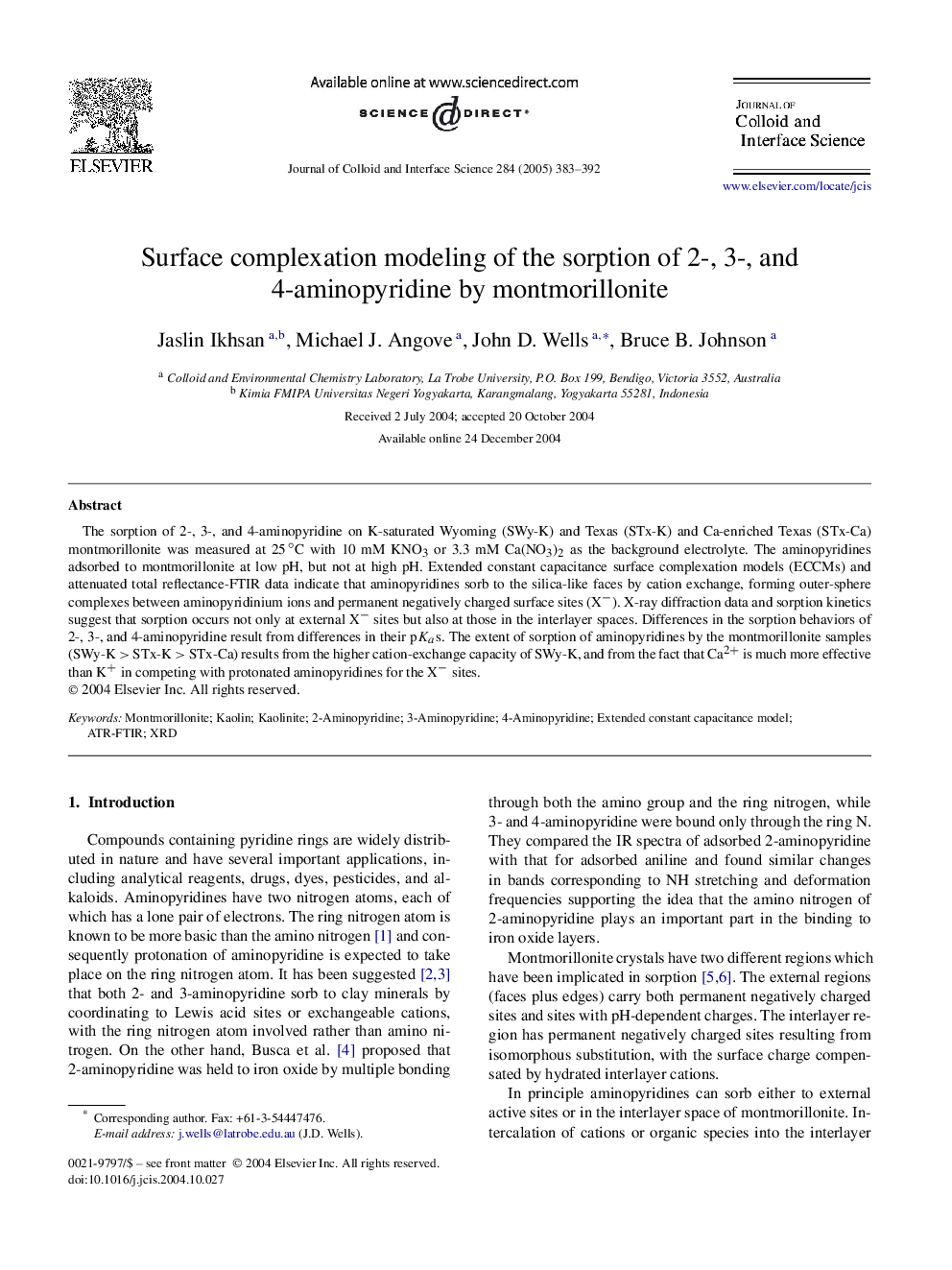| Article ID | Journal | Published Year | Pages | File Type |
|---|---|---|---|---|
| 10378205 | Journal of Colloid and Interface Science | 2005 | 10 Pages |
Abstract
The sorption of 2-, 3-, and 4-aminopyridine on K-saturated Wyoming (SWy-K) and Texas (STx-K) and Ca-enriched Texas (STx-Ca) montmorillonite was measured at 25â°C with 10 mM KNO3 or 3.3 mM Ca(NO3)2 as the background electrolyte. The aminopyridines adsorbed to montmorillonite at low pH, but not at high pH. Extended constant capacitance surface complexation models (ECCMs) and attenuated total reflectance-FTIR data indicate that aminopyridines sorb to the silica-like faces by cation exchange, forming outer-sphere complexes between aminopyridinium ions and permanent negatively charged surface sites (Xâ). X-ray diffraction data and sorption kinetics suggest that sorption occurs not only at external Xâ sites but also at those in the interlayer spaces. Differences in the sorption behaviors of 2-, 3-, and 4-aminopyridine result from differences in their pKas. The extent of sorption of aminopyridines by the montmorillonite samples (SWy-K > STx-K > STx-Ca) results from the higher cation-exchange capacity of SWy-K, and from the fact that Ca2+ is much more effective than K+ in competing with protonated aminopyridines for the Xâ sites.
Related Topics
Physical Sciences and Engineering
Chemical Engineering
Colloid and Surface Chemistry
Authors
Jaslin Ikhsan, Michael J. Angove, John D. Wells, Bruce B. Johnson,
